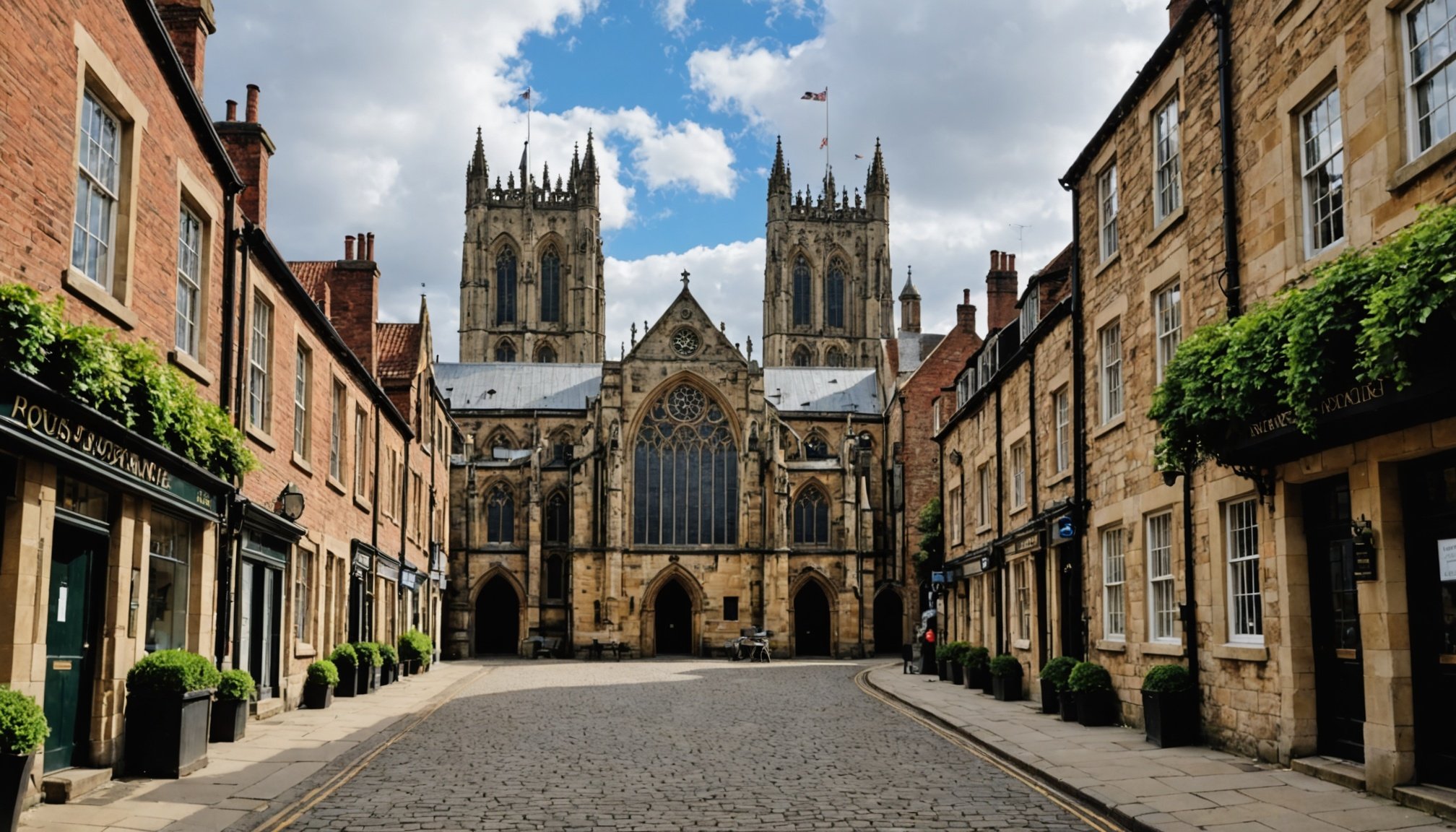Overview of Essential Insurance Factors for Historic Properties
For owners of historic properties, understanding insurance is critical due to the unique challenges these properties face. Unlike new constructions, historic buildings have distinct architectural features that are integral to their value, which can complicate insurance considerations. The preservation of these features often requires specialized knowledge and sometimes more costly methods, influencing how insurance policies are crafted.
Properties near historic sites, particularly in York, encounter specific challenges. Insurance considerations must factor in not just the building itself but also its surroundings. Historic property insurance must account for local historic site regulations and restrictions, which may limit modifications or repairs that do not preserve the building’s original state. Understanding these regulations in York, a city rich in heritage, is paramount in selecting the right insurance coverage.
This might interest you : Unlocking Savings: Exploring the Tax Advantages of Renting Out a Part of Your Home in the UK
The insurance landscape for these properties in York is varied. Unique risks, such as those posed by older construction materials or outdated infrastructure, require tailored insurance solutions. Moreover, the possibility of requiring specialized restoration work further complicates these factors. Owners should consult with insurance experts who understand the nuances of insuring historic properties to ensure they are adequately protected against potential risks and unforeseen challenges.
Risks Associated with Historic Properties
Owning a historic property presents unique property risks that necessitate careful attention to insurance. Potential hazards include structural vulnerabilities inherent in older buildings. These can range from outdated wiring to compromised foundation integrity, posing significant challenges. Understanding these risks helps in choosing tailored insurance policies.
This might interest you : Unlocking the Secrets: How to Successfully Obtain a Buy-to-Ret Mortgage for a Historic Bath Property
Local historic site regulations further complicate insurance matters. Laws often restrict renovations to maintain architectural integrity, limiting straightforward repairs. In many cases, special permits are required, elongating repair timelines and potentially increasing costs. These constraints highlight the importance of compliance when seeking insurance coverage.
Environmental factors also pose threats to historic properties. Older buildings might be less resistant to environmental hazards, such as flooding or earthquakes. Insurance must account for these additional risks, which might not affect newer constructions. The vulnerabilities can influence higher insurance premiums, making it crucial to understand the scope of coverage.
Considering these property risks, owners must engage with insurance providers versed in the challenges of historical sites. These providers offer insights into navigating local regulations and environmental factors, ensuring comprehensive coverage. Historic properties require a nuanced approach to insurance, reflecting the complex blend of preservation needs and inherent risks.
Policy Coverage Variations
The landscape of insurance policy types for historic properties is diverse, offering varying degrees of protection. Selecting the right policy involves discerning between options that address specific needs associated with restoration and preservation. Coverage options vary significantly, with some offering more comprehensive protection for the unique aspects of historic buildings. These may include specialized coverage for restoration costs, which can rapidly escalate due to the labour-intensive nature of such work and the need for materials that match the original construction.
When considering restoration costs, it’s crucial to meticulously review policy limits and exclusions. This helps ensure that the coverage adequately aligns with the values of the property and the potential expenses incurred during restoration efforts. Policies may have exclusions for standard repairs, emphasizing the importance of understanding the specific terms and conditions.
Property owners must evaluate their coverage carefully to identify possible gaps that might affect financial security. Not all policies are created equal, and some may not cater to the extensive preservation and restoration needs of historic properties. It’s advisable to consult with insurance specialists who understand these nuances, thereby ensuring that the property is covered against potential risks and that restoration efforts remain financially viable.
Local Regulations and Compliance
Understanding York regulations is crucial for owners of historic properties. Local laws govern the preservation and maintenance of such sites, ensuring that historic preservation remains a priority. These laws may dictate specific requirements for restorations or enhancements, affecting insurance coverage options. Non-compliance can result in penalties or denied claims, making knowledge of these rules essential for eligibility.
Property owners must adhere to compliance requirements to qualify for certain insurance benefits. Factors like permitted materials for repairs and the extent of modifications allowed are governed by these regulations. Insurance policies often demand strict adherence, necessitating careful planning and consultation with experts who can guide compliance strategies.
Failing to comply with local regulations may have substantial ramifications, including difficulties in securing adequate insurance. The consequences could include increased premiums or even insurance denial. Therefore, property owners are encouraged to work closely with insurance providers knowledgeable about local laws, ensuring policies accurately reflect the required standards. Awareness and understanding of local laws can prevent costly oversights and ensure that historic properties are insured with the most appropriate coverage. Engaging with professionals specializing in historic preservation can provide valuable insights into maintaining compliance and achieving comprehensive insurance solutions.
Historical Preservation Requirements
Navigating the intricate landscape of preservation standards is crucial for historic property owners. These standards ensure the integrity and authenticity of historic sites but can significantly affect insurance options. Compliance with preservation guidelines often demands careful planning and precise execution during renovations or restorations. Understanding these requirements is essential as they can have direct implications on both the scope and cost of insurance coverage.
Fortunately, there are avenues of support available for property owners aiming to meet these stringent standards. Grant programs and other forms of financial assistance can provide much-needed relief, offsetting the expenses associated with preserving historical features. Such resources often encourage and facilitate owners in maintaining the cultural value of their properties while managing the financial burden.
Insurance policies for historic properties are deeply intertwined with preservation efforts. Insurers may offer specialized coverage that aligns with preservation needs, considering the unique risks that accompany these properties. Meeting preservation standards not only safeguards the property’s historical and cultural value but also enhances its eligibility for comprehensive insurance coverage. This relationship underscores the importance for owners to stay informed and utilise available grants to support their preservation initiatives.
Financial Implications of Insuring Historic Properties
For historic property owners, the financial implications of insurance extend beyond the basic premiums. Proximity to historic sites can significantly influence property value, potentially leading to increased insurance premiums. This proximity often implies additional risks, as properties may need to adhere to stricter documentation and restoration standards, impacting the overall cost of insurance.
When insuring a historic property, owners should conduct a thorough cost analysis. This involves evaluating not only the premium but also understanding the long-term financial impact on property value. Insurance premiums can be higher due to the specialised nature of cover required for these properties, including considerations for unique restoration and preservation needs.
The long-term financial implications are critical; comprehensive insurance can protect against unexpected financial burdens from restoration or compliance needs. It is prudent to balance premium costs against potential future expenses.
Property owners should also contemplate the broader financial benefits of maintaining insurance that meets preservation standards, such as eligibility for grants or reduced liability during restoration projects. By considering these factors, owners can better navigate the complexities of insuring historic properties and make more informed financial decisions regarding their unique investments.
Practical Tips for Property Owners
Owning a historic property comes with both rewards and responsibilities. To effectively manage these responsibilities, property owners should focus on several insurance tips. Conducting thorough research on different property management techniques is essential. This process involves understanding the various risk mitigation strategies available, ensuring that your property not only complies with regulations but also secures the most favourable insurance terms.
Regular policy reviews are crucial. Over time, changes in property value, regulation amendments, or new risk factors can affect your insurance needs. By frequently updating policies, owners can maintain optimal coverage and adjust to evolving circumstances, thus avoiding inadequate protection or unnecessary expenses.
Property owners should also explore resources for comparing insurance options. This includes consulting with professionals who specialise in historic properties, as they can offer tailored advice and solutions that consider both the unique characteristics of these properties and financial sustainability.
Moreover, embracing risk-reduction tactics, such as reinforcing older structures or upgrading outdated systems, can lead to lower premiums. Implementing such strategies not only enhances the safety and longevity of the property but also offers peace of mind by reinforcing the property’s resilience against unforeseen challenges.
Expert Opinions and Case Studies
Engaging with insurance expert insights can shed light on the complexities involved in insuring historic properties. Experts emphasize that each historic property requires a personalized insurance plan due to their unique architecture and regulations. This tailoring is crucial to adequately cover both common property risks and rare perils.
Real-world case studies offer invaluable lessons in crafting successful insurance strategies. For example, a historic theatre in York faced substantial restoration costs after a storm. By having a tailored policy with extended coverage for unique restoration needs, they mitigated financial setbacks. This highlights the importance of policies that address specific historical preservation standards and environmental risks.
Learning from past insurance claims can be particularly instructive. One standout example involved a historic home that experienced significant structural damage due to outdated infrastructure. The owner’s foresight in securing comprehensive coverage, focusing on restoration and repair costs, proved to be an effective strategy in offsetting long-term expenses.
These narratives showcase the critical need for in-depth understanding and strategic planning in historic property insurance. Property owners are encouraged to leverage expert advice and draw from real-world experiences to craft insurance policies that safeguard their investments against potential risks and nuisance factors associated with historic sites.

